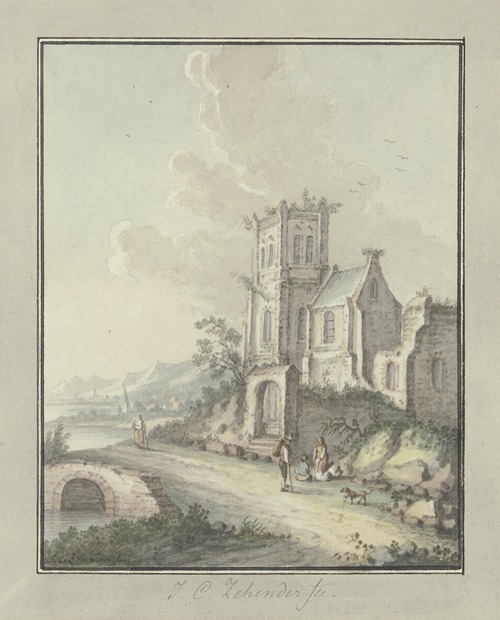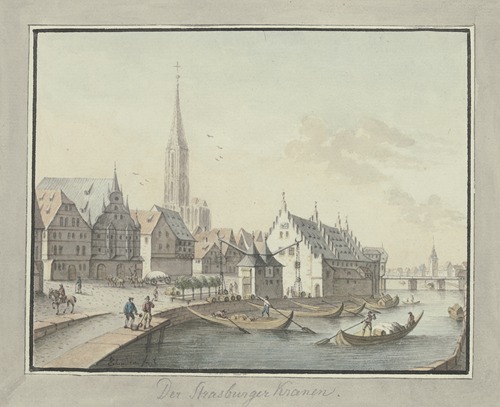



Johann Caspar Zehender, also known as Johann Caspar Zehnter was a Swiss draughtsman, painter and etcher in the last third of the 18th century. His panorama-like pictures primarily capture the state of the then free imperial city of Frankfurt am Main, the surrounding area and Mainz before the great upheavals of the early 19th century and are thus an important topographical record.
Very little is known about Zehender's life for an 18th century artist. His birth in 1742 in Schaffhausen, the capital of the Swiss canton of the same name, is documented, but even his affiliation to a family of artists of the same name from Bern, which can be traced back to the 16th century, is disputed. His ancestors include Hans Zehender, who worked as a painter and stained glass artist from 1555 to 1635, Jean Louis Zehender, a miniature painter born in 1644, Emanuel Zehender, who worked as an architect from 1687 to 1757, and his son Ludwig Emanuel Zehender, who practiced the same profession and lived from 1720 to 1799.
Another theory mentioned in the literature is that he was the elder son of the Leipzig wine tavern owner Johann Zehender. His younger son, the language teacher Johann Friedrich Zehender, born in 1759, was granted Frankfurt citizenship on December 19, 1780. Johann Caspar would therefore have succeeded his younger brother, albeit without his success, as it is proven that he never obtained citizenship.
Zehender's exact creative period in the Rhine-Main region, especially in Frankfurt am Main, cannot be determined either. However, due to the large number of his surviving works, most of which are signed with dates, it can at least be narrowed down to the years 1770 to 1784. According to this, he probably stayed in the free imperial city from the late 1760s at the latest. There are two paintings by him in the Georgium in Dessau, including a portrait of a woman signed Madame de Streegen née Aul, par Zehnter à Frt. 1799. 1799. As Zehender is buried in the city of his birth, he can therefore have returned to his homeland at the earliest six years before his death in 1805.



